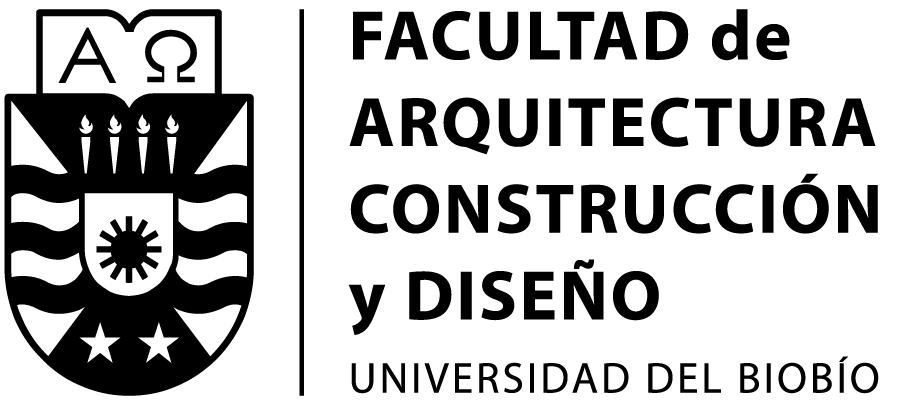La vulnerabilidad ecosistémica según el planeamiento en la protección del suelo de la Comunidad de Madrid
DOI:
https://doi.org/10.22320/07183607.2021.24.43.02Palabras clave:
desarrollo sostenible, ecología, impacto ambiental, medio ambiente, planificación territorialResumen
La Vulnerabilidad Ecosistémica según el Planeamiento (VEP) buscar valorar el papel de los servicios ecosistémicos para el mantenimiento y fortalecimiento de nuestras ciudades través de la identificación de los ecosistemas, su valoración y consideración desde la planificación. Esta investigación es una adaptación metodológica de un proyecto europeo que busca, a través de una propuesta de la Agencia Europea de Medioambiente, cartografiar sus ecosistemas y las presiones que reciben. Gracias a ello se deberían establecer políticas reductoras de estas presiones sobre el medio natural o evitar traspasar niveles críticos con el resultado de cambios en su nivel de resiliencia. La consideración del planeamiento como otro factor de presión supone la visibilización de un nuevo riesgo para estos ecosistemas que, si bien no había sido contemplada por el momento, tiene una gran relevancia en nuestro contexto. En ese sentido, es preciso aumentar la escala de trabajo y contar con las previsiones de crecimiento y protecciones de suelo existentes cuya información a nivel internacional sería muy difícil de homogenizar y obtener. Así, esta propuesta metodológica se centra concretamente en la Comunidad de Madrid (España) para identificar las presiones contempladas por la metodología europea y sumar una nueva variable que altera el riesgo de pérdida de estos sitios. El caso de estudio plantea desafíos importantes debido a la alta presión urbana presente, pero ejemplariza la problemática de los ecosistemas en el área analizada, identificando los espacios con menor resiliencia conjunta antes estos cambios, a razón de su predisposición a la urbanización.
Descargas
Citas
Artmann, M. (2014). Institutional efficiency of urban soil sealing management - From raising awareness to better implementation of sustainable development in Germany. Landscape and Urban Planning, 131, 83-95. DOI: https://doi. org/10.1016/j.landurbplan.2014.07.015
Córdoba Hernández, R. y Garciá-Burgos Pérez, A. (2020). Urbanización inclusiva y resiliente en asentamientos informales Ejemplificación en Latinoamérica y Caribe. Bitacora Urbano Territorial, 30(2), 61-74. Universidad Nacional de Colombia. DOI: https://doi.org/10.15446/BITACORA.V30N2.81767
Córdoba Hernández, R. y Morcillo Álvarez, D. (2020). Territorial frame of space production in the functional region of Madrid. Ciudades, 23, 71-93. DOI: https:// doi.org/10.24197/CIUDADES.23.2020.71-93
European Commission (2013). Vivir bien, respetando los límites de nuestro planeta. VII PMA – Programa General de Acción de la Unión en materia de Medio Ambiente hasta 2020. Recuperado de http://europa.eu/legislation_summaries/ consumers/consumer_safety/l32042_es.htm
European Environment Agency (2017). Climate change adaptation and disaster risk reduction in Europe. Enhancing coherence of the knowledge base, policies and practices. EEA Report, (15). Recuperado de https://www.eea. europa.eu/publications/climate-change-adaptation-and-disaster
Everard, M., Johnston, P., Santillo, D. y Staddon, C. (2020). The role of ecosystems in mitigation and management of Covid-19 and other zoonoses. Environmental Science and Policy, 111, 7-17. DOI: https://doi.org/10.1016/j.envsci.2020.05.017
Fernández Durán, R. y González Reyes, L. (2014). En la espiral de la energía. Libros en Acción/Baladre. Recuperado de https://www.ecologistasenaccion. org/29055/libro-en-la-espiral-de-la-energia/
Gardi, C., Panagos, P., Van Liedekerke, M., Bosco, C. y De Brogniez, D. (2015). Land take and food security: assessment of land take on the agricultural production in Europe. Journal of Environmental Planning and Management, 58(5), 898-912. DOI: https://doi.org/10.1080/09640568.2014.899490
Ghaley, B. B., Vesterdal, L. y Porter, J. R. (2014). Quantification and valuation of ecosystem services in diverse production systems for informed decision-making. Environmental Science and Policy, 39, 139-149. DOI: https://doi. org/10.1016/j.envsci.2013.08.004
Gómez-Baggethun, E. y Barton, D. N. (2013). Classifying and valuing ecosystem services for urban planning. Ecological Economics, 86, 235-245. DOI: https://doi. org/10.1016/j.ecolecon.2012.08.019
Guerry, A. D., Polasky, S., Lubchenco, J., Chaplin-Kramer, R., Daily, G. C., Griffin, R., … y Vira, B. (2015). Natural capital and ecosystem services informing decisions: From promise to practice. Proceedings of the National Academy of Sciences of the United States of America, 112(24), 7348-7355. DOI: https://doi.org/10.1073/ pnas.1503751112
Haase, D., Larondelle, N., Andersson, E., Artmann, M., Borgström, S., Breuste, J., … y Elmqvist, T. (2014). A quantitative review of urban ecosystem service assessments: Concepts, models, and implementation. Ambio, 43(4), 413-433. DOI: https://doi.org/10.1007/s13280-014-0504-0
Haines-Young, R. y Potschin, M. (2012). The links between biodiversity, ecosystem services and human well-being. En Raffaelli, D. G. y Frid, C. L. J. (Eds.), Ecosystem Ecology (pp. 110-139). Cambridge University Press. DOI: https://doi.org/10.1017/cbo9780511750458.007
Harrison, P. A., Berry, P. M., Simpson, G., Haslett, J. R., Blicharska, M., Bucur, M., ... y Turkelboom, F. (2014). Linkages between biodiversity attributes and ecosystem services: A systematic review. Ecosystem Services, 9, 191-203. DOI: https://doi.org/10.1016/j.ecoser.2014.05.006
Hassan, R. (2005). Ecosystems and Human Well-being: Current State and Trends. Millennium Ecosystem Assessment. Recuperado de https://www. millenniumassessment.org/en/Condition.html#download
Hernández Aja, A. Aparicio Mourelo, Á., Gómez García, M. V., González García, I., Córdoba Hernández, R., Díez Bermejo, A., ... y Picardo Costales, L. (2020). Resiliencia funcional de las áreas urbanas. El caso del Área Urbana de Madrid. Madrid: Instituto Juan de Herrera. Recuperado de http://oa.upm.es/63377/
HIC-AL/Grupo de trabajo de PSH. (2017). Utopías en construcción. Experiencias latinoamericanas de producción social del hábitat. HIC-AL. http://autogestao. unmp.org.br/artigos-e-teses/utopias-en-construccion-experiencias-latinoamericanas-de-produccion-social-del-habitat/
Huemann, M., Schueler, G., Mueller, C., Schneider, R., Johst, M. y Caspari (2011). Identification of runoff processes - The impact of different forest types and soil properties on runoff formation and floods. Journal of Hydrology, 409(3-4), 637-649. DOI: https://doi.org/10.1016/j.jhydrol.2011.08.067
Hurlimann, A. C. y March, A. P. (2012). The role of spatial planning in adapting to climate change. En Wiley Interdisciplinary Reviews: Climate Change, 3(5), 477- 488. DOI: https://doi.org/10.1002/wcc.183
Koukoui, N., Gersonius, B., Schot, P. P. y Van Herk, S. (2015). Adaptation tipping points and opportunities for urban flood risk management. Journal of water and climate change, 6(4), 695-710. DOI: https://doi.org/10.2166/wcc.2015.093
Kumar, P. (Ed.) (2012). The Economics of Ecosystems and Biodiversity: Ecological and Economic Foundations. Londres: Routledge Taylor and Francis Group. DOI: https://doi.org/10.4324/9781849775489
Linney, G. N., Henrys, P. A., Blackburn, G. A., Maskell, L. C. y Harrison, P. A. (2020). A visualization platform to analyze contextual links between natural capital and ecosystem services. Ecosystem Services, 45. DOI: https://doi.org/10.1016/j. ecoser.2020.101189
Maes, J. Teller, A., Erhard, M., Liquete, C., Braat, L., Berry, P., … y Hauck, J. (2013). An analytical framework for ecosystem assessments under action 5 of the EU biodiversity strategy to 2020. Luxemburgo: European Environment Agency’ / Publications office of the European Union. DOI: https://doi.org/10.2779/12398
Maes, J., Teller, A., Erhard, M., Murphy, P., Paracchini, M. L., Barredo, J. I., …, y Lavalle, C. (2014). Mapping and Assessment of Ecosystems and their Services. Indicators for ecosystem assessments under Action 5 of the EU Biodiversity Strategy to 2020. Recuperado de https://ec.europa.eu/environment/nature/ knowledge/ecosystem_assessment/pdf/2ndMAESWorkingPaper.pdf
Mcgranahan, G., Balk, D. y Anderson, B. (2007). The rising tide: Assessing the risks of climate change and human settlements in low elevation coastal zones. Environment and Urbanization, 19(1), 17-37. DOI: https://doi. org/10.1177/0956247807076960
Mcgrane, S. J. (2016). Impacts of urbanisation on hydrological and water quality dynamics, and urban water management: a review. Hydrological Sciences Journal, 61(13), 2295-2311. DOI: https://doi.org/10.1080/02626667.201 5.1128084
Meerow, S., Newell, J. P. y Stults, M. (2016). Defining urban resilience: A review. En Landscape and Urban Planning, 147, 38-49. DOI: https://doi.org/10.1016/j. landurbplan.2015.11.011
Millennium Ecosystem Assessment (2004). Ecosystems and human well-being: a framework for assessment. Choice Reviews Online, 41(08), 41-4645-41- 4645. DOI: https://doi.org/10.5860/choice.41-4645
Ministerio para la transición ecológica y el reto demográfico. (2020). Estrategia nacional de infraestructura verde y de la conectividad y restauración ecológicas. Recuperado de https://www.miteco.gob.es/images/es/borradoreeivcre_ infopublica_tcm30-497133.PDF
Oyedeji, K. (2017). Natural disasters. Virginia Quarterly Review, 93(1), 159-166. DOI: https://ourworldindata.org/natural-disaster
Rigaud, K. K., de Sherbinin, A., Jones, B., Bergmann, J., Clement, V., Ober, K., ... y Midgley, A. (2018). Groundswell : preparing for internal climate migration (Vol. 2) : Main report. International Bank for Reconstruction and Development / The World Bank. DOI: https://doi.org/doi.org/10.7916/D8Z33FNS
Sala, O. E., Chapin, F. S., Armesto, J. J., Berlow, E., Bloomfield, J., Dirzo, R., ... y Wall, D. H. (2000). Global biodiversity scenarios for the year 2100. Science, 287(5459), 1770-1774). DOI: https://doi.org/10.1126/science.287.5459.1770
Sandifer, P. A., Sutton-Grier, A. E. y Ward, B. P. (2015). Exploring connections among nature, biodiversity, ecosystem services, and human health and well-being: Opportunities to enhance health and biodiversity conservation. Ecosystem Services, 12, 1-15. DOI: https://doi.org/10.1016/j.ecoser.2014.12.007
Simón Rojo, M., Zazo Moratalla, A., Alonso, N. M. y Jiménez, V. H. (2014). Pathways towards the integration of periurban agrarian ecosystems into the spatial planning system. Ecological Processes, 3(13), 16. DOI: https://doi. org/10.1186/s13717-014-0013-x
Stürck, J., Poortinga, A. y Verburg, P. H. (2014). Mapping ecosystem services: The supply and demand of flood regulation services in Europe. Ecological Indicators, 38, 198-211. DOI: https://doi.org/10.1016/j.ecolind.2013.11.010
Unión Europea (2011). Estrategia de la UE sobre la Biodiversidad hasta 2020: nuestro seguro de vida y capital natural. DOI: https://doi.org/10.2779/40184
United Nations (2017). System of Environmental-Economic Accounting 2012. DOI: https://doi.org/10.5089/9789211615630.069
United Nations (2018). Agenda 2030 y los Objetivos de Desarrollo Sostenible. Una oportunidad para América Latina y el Caribe. Recuperado de https://repositorio. cepal.org/bitstream/handle/11362/40155/24/S1801141_es.pdf
Valenzuela Rubio, M. (2010). La planificación territorial de la región metropolitana de Madrid. Una asignatura pendiente. Cuadernos Geograficos, 47, 95-129. DOI: https://doi.org/10.30827/cuadgeo.v47i0.603
Descargas
Publicado
Cómo citar
Número
Sección
Licencia
Derechos de autor 2021 Rafael Córdoba-Hernández

Esta obra está bajo una licencia internacional Creative Commons Atribución-CompartirIgual 4.0.
El contenido de los artículos y reseñas que se publican en cada número de Urbano, es responsabilidad exclusiva de los autores y no representan necesariamente el pensamiento ni comprometen la opinión de la Universidad del Bío-Bío.
Las/os autoras/es conservarán sus derechos de autor, sin embargo, garantizarán a la revista el derecho de primera publicación y difusión de su obra. La publicación del artículo en Urbano estará sujeta a la Licencia de Reconocimiento de Creative Commons CC BY-SA que permite a otros compartir-copiar, transformar o crear nuevo material a partir de esta obra para cualquier propósito, incluso comercialmente, siempre y cuando se reconozcan la autoría y la primera publicación en esta revista, y sus nuevas creaciones estén bajo una licencia con los mismos términos.![]()























